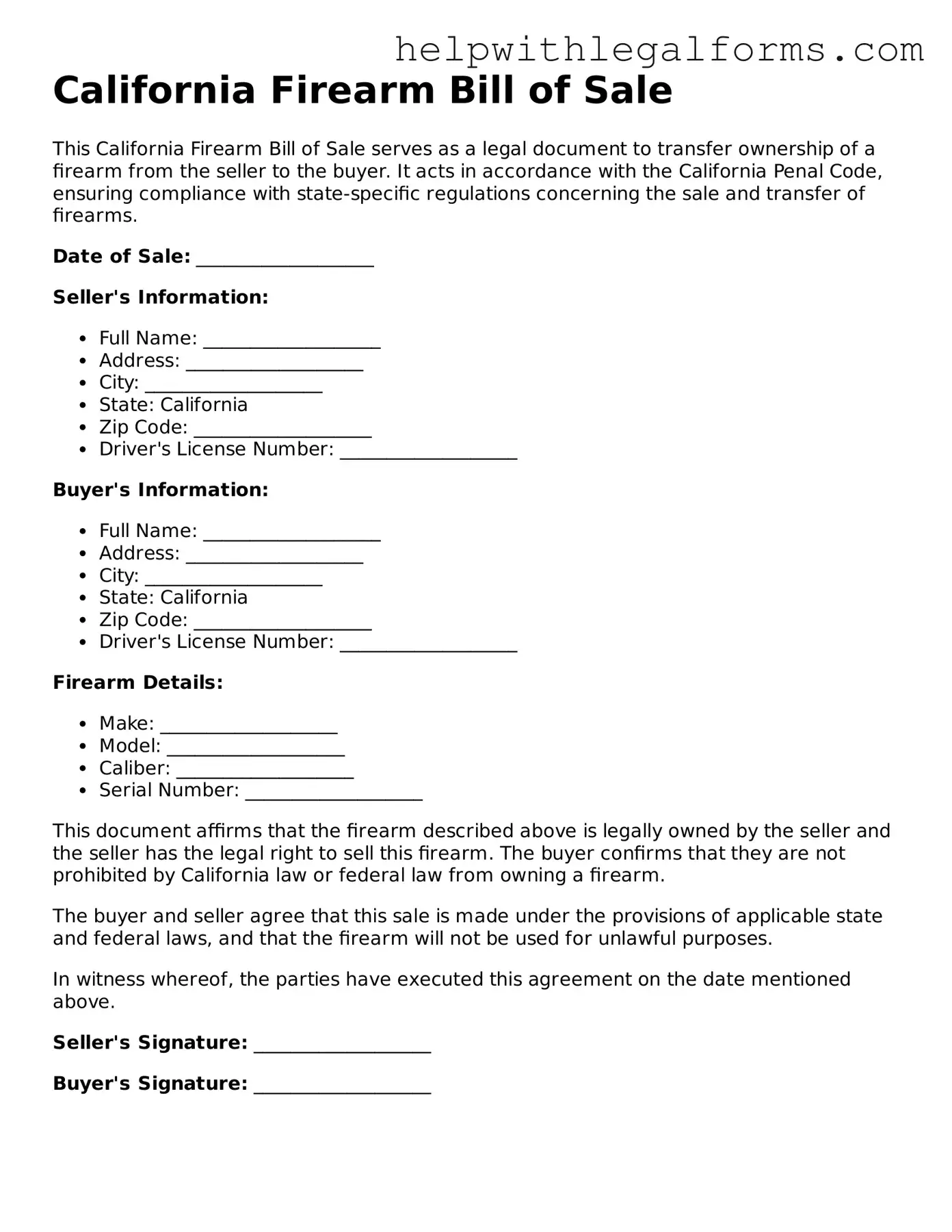What is a California Firearm Bill of Sale?
A California Firearm Bill of Sale is a legal document that records the sale or transfer of a firearm within the state of California. It includes details about the buyer, seller, and the firearm, ensuring the transaction is conducted legally and with clear documentation.
Why do I need a Firearm Bill of Sale in California?
In California, maintaining a record of the sale or transfer of a firearm is crucial for accountability and legal purposes. It serves as proof of purchase and ownership, and is necessary for the private sale of firearms. This document can also assist in the event of disputes, theft, or when required by law enforcement.
What details are included in a California Firearm Bill of Sale?
The form typically includes the names and addresses of both the seller and the buyer, a description of the firearm (make, model, caliber, and serial number), the sale price, and the date of sale. It may also include warranties or disclosures relevant to the firearm's condition.
Is a background check required for a private sale of a firearm in California?
Yes, California law requires that all firearm sales, including private transactions, must go through a licensed firearms dealer who will conduct a background check on the purchaser.
Do I need to notarize the Firearm Bill of Sale in California?
While notarization is not a legal requirement for the document to be effective in California, having the bill of sale notarized can add an additional layer of authenticity, serving as a safeguard for both parties involved in the transaction.
How does a Firearm Bill of Sale protect the seller?
A Firearm Bill of Sale provides legal evidence that the seller has transferred ownership of the firearm to the buyer, releasing the seller from potential legal liability should the firearm be used unlawfully in the future.
Can I use a generic bill of sale for a firearm transaction in California?
While a generic bill of sale can document the transaction, it is recommended to use a form specifically designed for firearm sales in California to ensure all legal aspects of the sale are fully covered, meeting state-specific requirements.
What should I do with the completed Firearm Bill of Sale?
Both the buyer and seller should keep a copy of the completed bill of sale for their records. It is important for the document to be readily available for legal, personal, or law enforcement inquiries.
Are there any post-sale actions required after completing a Firearm Bill of Sale in California?
Following the sale, the buyer must complete the firearm registration process with the California Department of Justice. This involves submitting a Firearm Ownership Report (FOR) or conducting a Dealer's Record of Sale (DROS) transaction through a licensed dealer, which includes the mandatory background check.
